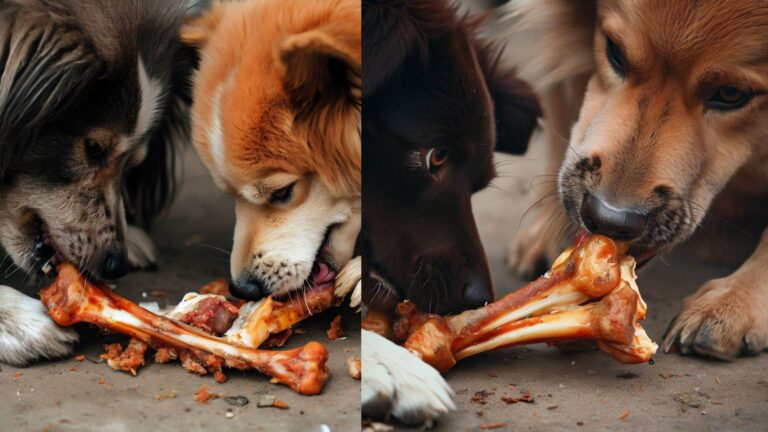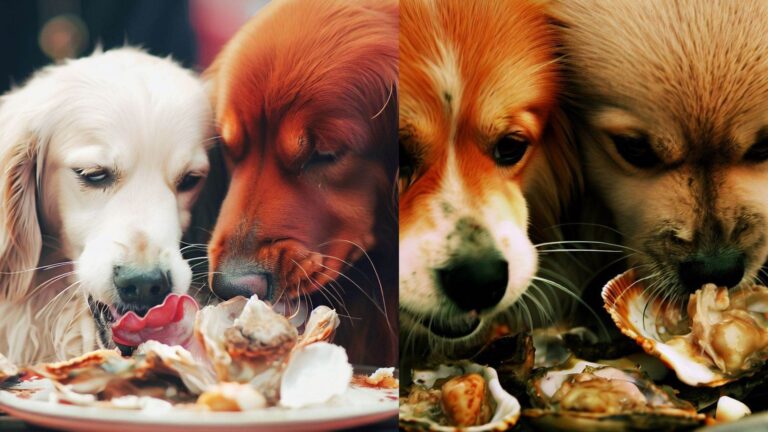When it comes to our furry friends, it’s only natural to want to share the delicious treats we enjoy with them. However, it’s crucial to be aware that not all human foods are safe for dogs. Chocolate, in particular, contains theobromine, a compound that can be toxic to dogs. While dark chocolate is the most dangerous, many pet owners wonder about the safety of white chocolate for their canine companions.
In this article, we will explore whether dogs can eat white chocolate and provide insights into safer alternatives for treating your four-legged friend.
Table of Contents
Understanding the Dangers of Chocolate
Before delving into the specifics of white chocolate, it’s essential to grasp the potential dangers of chocolate for dogs. Chocolate contains theobromine, a methylxanthine compound affecting a dog’s nervous and cardiovascular systems. Theobromine is present in varying amounts depending on the type of chocolate, with dark chocolate having the highest concentration.
The toxic effects of theobromine can lead to symptoms such as:
- Increased heart rate
- Restlessness
- Tremors
- Vomiting
- Diarrhea
- Excessive thirst
- Abnormal heart rhythm
- Seizures
It’s important to remember that dogs are more sensitive to theobromine than humans, making even small amounts of chocolate potentially harmful to them.

Is White Chocolate Safe for Dogs?
While white chocolate contains significantly lower levels of theobromine compared to dark or milk chocolate, it is not entirely safe for dogs. The theobromine content in white chocolate is minimal compared to other chocolate varieties, but it can still pose risks to your canine companion, especially if consumed in large quantities.
Additionally, white chocolate is high in fat and sugar, which can lead to digestive upset, pancreatitis, and weight gain in dogs. The high sugar content may also contribute to dental issues, such as tooth decay, in the long run.
Potential Risks and Considerations
- Theobromine Sensitivity: Dogs metabolize theobromine more slowly than humans, and even a small amount can accumulate in their system, potentially leading to toxicity. While theobromine levels are lower in white chocolate, it’s still advised to err on the side of caution.
- Individual Sensitivities: Dogs may react differently to certain foods, including white chocolate. Some dogs may experience adverse reactions, even in small quantities, while others may show no immediate signs of discomfort. However, this doesn’t mean it’s safe for them in the long term.
- High Fat and Sugar Content: White chocolate is high in fat and sugar, which can contribute to weight gain, obesity, and associated health problems. The excess fat content can also lead to digestive issues, such as diarrhea or pancreatitis.
Alternatives to White Chocolate
While white chocolate may not be a safe option for your furry friend, plenty of dog-friendly alternatives can satisfy their sweet tooth. Here are a few safe and tasty options:
- Dog-Specific Treats: There are numerous commercially available treats specifically formulated for dogs. These treats are often made with safe and beneficial ingredients for canines, providing a healthier option for rewarding your pup.
- Fruit Treats: Many fruits are safe and enjoyable for dogs. Offer your furry friend small slices of fruits like apples (without seeds), bananas, watermelon (seedless), or strawberries as a sweet and refreshing treat. Always remove any seeds or pits, as they can be harmful.
- Carob Treats: Carob is a dog-friendly alternative to chocolate. It resembles chocolate in taste but doesn’t contain theobromine. You can find carob-based treats or make your own using carob powder.
- Homemade Treats: You can prepare homemade dog treats using dog-friendly ingredients. There are numerous recipes available online that use ingredients like peanut butter, oats, pumpkin, and yogurt, which can be combined to create delicious and safe treats for your canine companion.
- Frozen Treats: Dogs love frozen treats, especially during hot weather. You can make frozen treats by blending dog-friendly ingredients like plain yogurt, mashed bananas, and a small amount of honey or peanut butter. Pour the mixture into ice cube trays or use a specialized dog treat mold and freeze them for a few hours. These frozen treats provide a refreshing and safe option for your dog to enjoy.
Important Considerations
- Moderation: Regardless of the treats you offer your dog, it’s essential to practice moderation. Treats should only account for a small portion of your dog’s daily caloric intake, as excessive treats can lead to obesity and other health issues.
- Consult Your Veterinarian: If you have any doubts or concerns about what treats suit your dog, it’s always best to consult your veterinarian. They can provide personalized advice based on your dog’s specific needs, dietary restrictions, and overall health.
- Safe Storage: Remember to store all treats, including dog-specific treats, in a secure place that is out of reach for your dog. Dogs are known for their curiosity and ability to get into places they shouldn’t. Storing treats safely helps prevent accidental ingestion of harmful substances.
Read More: Can Dogs Eat Beef Jerky?
FAQs

Can dogs eat white chocolate in small amounts?
While white chocolate contains less theobromine than other chocolate varieties, it’s still not recommended to feed it to dogs, even in small quantities, due to potential health risks.
What are the risks of feeding dogs white chocolate?
Feeding white chocolate to dogs can pose risks such as theobromine toxicity, digestive upset, pancreatitis, weight gain, and dental issues due to its high fat and sugar content.
Is white chocolate toxic to dogs?
White chocolate contains minimal theobromine compared to dark or milk chocolate, but it can still be toxic to dogs, especially if consumed in large quantities. Theobromine sensitivity can vary among individual dogs.
What are the signs of theobromine poisoning in dogs?
The signs of theobromine poisoning in dogs may include increased heart rate, restlessness, tremors, vomiting, diarrhea, excessive thirst, abnormal heart rhythm, seizures, and in severe cases, even death.
How much white chocolate is dangerous for dogs?
There is no safe amount of white chocolate for dogs. Even small amounts can potentially be harmful due to the cumulative effect of theobromine in their system.
What should I do if my dog eats white chocolate?
If your dog consumes white chocolate, contact your veterinarian immediately. They can provide guidance based on your dog’s size, the amount ingested, and other relevant factors.
Can white chocolate cause pancreatitis in dogs?
Yes, the high-fat content in white chocolate can potentially trigger pancreatitis in dogs, a condition characterized by inflammation of the pancreas. Pancreatitis can be life-threatening and requires veterinary care.
Can dogs have carob instead of white chocolate?
Carob is a safe alternative to chocolate for dogs. It resembles chocolate in taste but doesn’t contain theobromine. Carob-based treats can be a dog-friendly substitute for white chocolate.
What are some dog-friendly alternatives to white chocolate?
Dog-specific treats, fruit treats (such as apples, bananas, or watermelons), homemade treats using safe ingredients, and frozen treats made with yogurt are all dog-friendly alternatives to white chocolate.
Can dogs eat cocoa butter or cocoa powder?
While cocoa butter and cocoa powder contain less theobromine than other chocolate components, they should still be avoided as they can be harmful to dogs. It’s best to steer clear of any chocolate-related products when it comes to your furry friend’s diet.
Can dogs eat white chocolate macadamia?
No, dogs should not consume white chocolate macadamia. Macadamia nuts are toxic to dogs, and white chocolate is also not recommended for them. Keep macadamia nuts and white chocolate treats away from your furry friend.
Can dogs eat white chocolate ice cream?
White chocolate ice cream is not recommended for dogs. Ice cream contains ingredients like sugar, dairy, and possibly chocolate, all of which can be harmful to dogs. Stick to dog-friendly frozen treats instead.
Can dogs eat white chocolate chip cookies?
White chocolate chip cookies are not safe for dogs. White chocolate, combined with other ingredients like sugar, butter, and potentially harmful additives, can lead to digestive upset, weight gain, and other health issues. Avoid giving these cookies to your dog.
Conclusion
While white chocolate contains lower levels of theobromine than other chocolate varieties, it is unsafe for dogs. Theobromine, fat, and sugar content in white chocolate can pose risks and potentially lead to various health issues for your furry friend. It’s always better to be cautious and avoid giving any chocolate, including white chocolate, to your dog.
Remember, your dog’s well-being should always be a top priority, and providing a balanced and nutritious diet tailored to their needs is the best way to keep them happy and healthy.






